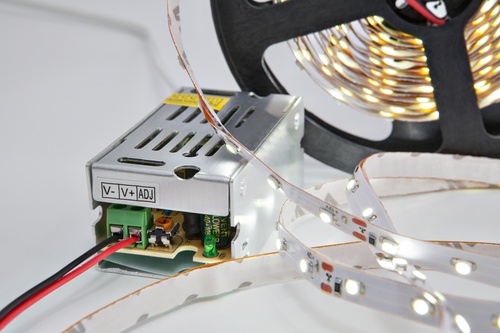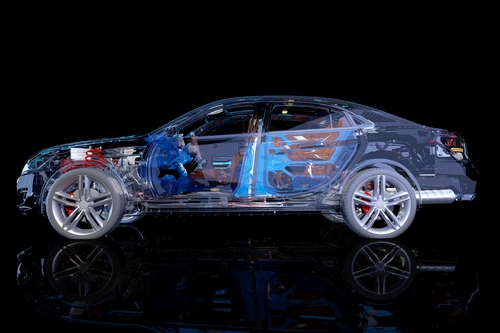New GB/T Standard 17743-2021 for LED Drivers Coms Into Effect
CNCA has updated the GB/T 17743-2017 standard in 2021. On July 01, 2022, the new standard GB/T 17743-2021 for limits and methods for measuring radio disturbance characteristics of electric lighting and similar equipment became effective. This is equivalent to the IEC international standard CISPR 15:2018 and is an important test basis for electric lighting and similar equipment in terms of emission nuisance.

One of the most important changes relates to the test samples to be prepared for radiated electromagnetic interference tests. Instead of samples at 30MHz-300MHz, samples at 30Mhz-1GHz are now requested.
A detailed summary of the differences between the old and new standard can be found in the table below:
| Recommendations on the differences between test items and supplementary test requirements for GB/T 17743-2021 and GB/T 17743-2017 | ||||
| No. | Test items of GB/T 17743-2017 | Test items of GB/T 17743-2021 | Differences | Whether to supplement the test |
| 1 | Insertion loss | Replace with the disturbance voltage of the power connector | The original test item is a luminaire with insertion loss, except for products other than those that contain only passive control devices and are equipped with power factor correction capacitors or suppression capacitors (at least 47nF) between the power terminals and conduct conduction disturbance tests on the power interface. | NO |
| 2 | The power terminals disturb the voltage | Disturbance voltage of the power connector | No difference | NO |
| 3 | Control terminal disturbance voltage | Conducted disturbance voltage of wired network interfaces other than power supply | Add the limits and measurement methods of the current probe | NO |
| 4 | Load terminal disturbance voltage | Disturbance voltage of the local wired port | Two types of “local wired ports” are distinguished. Respectively: a) The EUT interface that is indirectly connected to the network through peripherals (this includes the power interface of the ELV lamp). |
NO |
| b) Not directly or indirectly connected to the network and may be connected to the length of the cable equal to or greater than 3m of the EUT interface. Add current probe: limits of the head and measurement method. |
YES: The EUT interface of a cable with a length equal to or greater than 3m can be connected, and the disturbance voltage test of the local wired port needs to be added. | |||
| 5 | Radiated Electromagnetic Disturbance (9kHz~ ~ 30MHz) | Enclosure Port Radiation Disturbance (9kHz~ ~ 30MHz | 1. There is no difference when testing with the LLAS system. 2. When the EUT sample size is greater than 1.6 m, it can be measured using a 60 cm ring antenna while giving new limits. 3. Products that will produce a large magnetic dipole moment have changes in the measurement arrangement when performing this test. For example (but not limited to) the following: a. The manufacturer allows an external wired interface to the EUT via a single wire: b. The EUT employs an internal single conductor and a separate interconnected wiring (or PCB trace), resulting in loops and associated magnetic dipoles: Application of inductive, type energy transfer technology EUT. | NO |
| 6 | Radiated Electromagnetic Disturbance (30MHz~ 300MHz) | Enclosure Port Radiation Disturbance (30MHz~ 1GHz | Frequencies are extended from 300 MHz to 1 GHz, introducing a variety of radiation disturbance limits and related measurement methods. For improved reproducibility, when measuring using OATS, SAC, or FAR methods, the EUT’s power cable should be terminated using a CDNE located on the reference: test ground level (if applicable), and the receiver port of the CDNE should be terminated with an impedance of 50 Ω. | YES |
| Radiated Electromagnetic Disturbance (CDN Act (30MHz~ 300MHz)) | Radiated electromagnetic disturbance of enclosure port (CDNE method (30MHz~ 300MHz)) | The CDN method was updated to CDNE testing, adding a limit condition: only suitable for the maximum size is 3 mX 1mX1m (length X width X height), clock frequency < 30MHz EUT, and the rated voltage does not exceed 6o0v, EUT is not more than 2 cables). If the CDNE test fails, other methods and associated limits can still be applied. | ||
If you are unsure whether your product falls under the CCC certification obligation or is affected by the changes, please do not hesitate to contact us. An overview of the product groups for which certification is relevant can be found here.
Our CCC certification brochure also provides a detailed overview of the certification.
Please contact us with any questions about the new regulations, voluntary China certification or China CCC SDoC.
You can contact us by email or call us at +49692713769150 (EU) or +1-773-654-2673 (US)
Meituan backs AI chip startup, other Chinese tech giants also invest in semiconductors
Chinese AI chip start-up Axera recently raised $126 million from investors, including major food delivery service Meituan. As CNBC reports, other tech companies are also investing in in-house or local semiconductor manufacturing. Axera’s recent round of investment highlights investors’ desire to invest in Chinese semiconductor startups. Among the backers was venture capitalist Qiming Venture Partners. Electronic components must be awarded a CCC certificate in order for the products to be exported to China or manufactured locally.

The government in Beijing has made self-reliance in chip manufacturing and research and development in this area a top priority, as currently the entire local industry is dependent on foreign technology. Semiconductors and computer chips are now incorporated into many everyday items such as smartphones and cars, and are considered strategically important products by governments. The current global shortage of semiconductors has caused long delivery times for vehicles and electronic products such as game consoles and graphics cards.
The Chinese government’s announcement that it would focus more on semiconductors led to a wave of investment by technology companies in the relevant industries: last year, for example, Tencent invested in Shanghai-based Enflame Technology and unveiled three of its own computer chips. Baidu established its own AI chip development division and is already producing the second generation of its AI semiconductor. Online shopping giant Alibaba developed its own computer chips for its data centers.
Food and grocery delivery service Meituan now followed suit in these investments, backing startup Axera. Its products specialize in AI chips for image recognition. This enables computers to analyze and evaluate a large number of images, which is useful in facial recognition, for example. The high computing power required for this is provided by the special Axera chips. Since its founding in May 2019, the startup has already presented two different chips that can be used in urban areas (smart cities) and at home (smart homes), among other applications. Axera plans to use the money from the investment round to hire new professionals and expand the company.
CCC certification for electronic products is a complex project that requires professional supervision at all stages. For more information on how CCC certification, the CCC Self-Declaration and voluntary CCAP or CQC certification may affect your company, or for more information about CCC certification in general, the process, and the associated costs, please visit our website and our News Section where you will find current updates twice a week.
Please do not hesitate to contact us for further details and consultation. You can contact us via e-mail, or call us (UK: +44 2071931135, Rest of Europe: +49 69 2713769150, US: +1 773 654-2673).
Please don’t hesitate to also use our chat-window in the bottom right corner if you have any questions. (Please check your browser settings if you can’t see the window)
You can also check out our free CCC-Brochure, which can be downloaded right here as a PDF file or you consult our book (in English) “A Brief Guide to CCC: China Compulsory Certification”, which can be found directly here on Amazon.
Here you can download our brochure about the CCC Self-Declaration.
Here you can download our brochure about the voluntary CCAP or CQC certification.
Tesla delivery numbers stay high despite Model 3 and Model Y price hikes
Tesla showed strong numbers last year, having delivered a record of over 70,500 vehicles in China in December. This easily surpassed the previous high of around 52,100 vehicles in September 2021. According to the China Passenger Vehicle Association, more than 70,700 vehicles were produced. Tesla produces the Model 3 sedan and Model Y SUV in China at its Gigafactory 3 near Shanghai. Vehicles and components must be awarded a CCC certificate in order for the products to be exported to China or manufactured locally.

According to Phate Zhang, founder of technology portal CnEVpost, Tesla wants to reduce the number of orders and has therefore raised list prices for new cars. Tesla’s Shanghai plant is suffering from a shortage of chips as the number of vehicles ordered increases, Zhang added. Tesla could therefore fall behind schedule and fail to deliver vehicles on time. In a statement released by Tesla, the company gave more key data on Gigafactory 3, which began operations in 2019 and produced a total of over 484,000 vehicles last year. That represents around 51 percent of Tesla’s total global production of 936,000 units.
A senior Tesla sales manager told the South China Morning Post that the Shanghai plant has already reached its maximum capacity of 450,000 vehicles annually. The price of the base-spec Model Y SUV rose around 9 percent to 301,800 yuan ($47,400). For the Model 3 sedan, the price rose 6 percent to 265,600 yuan ($40,300).
In 2022, the focus will be primarily on the two new gigafactories in Texas and Brandenburg. The start of mass production has been delayed by supply chain problems and the shutdown at Chinese cargo ports caused by the pandemic in the last 2 years.
However, if the factories can overcome the current sluggish phase, hundreds of thousands of electric cars could be produced by the following year.
There are also plans for a new battery plant to produce energy storage devices, which could lead to the possibility of mega-batteries for households in the future.
CCC certification for automotive products is a complex project that requires professional supervision at all stages. For several years, MPR China Certification GmbH has been entrusted with large CCC projects for the vehicle manufacturers Lotus, Tesla and Bugatti. We will be pleased to provide you with non-binding advice on the scope and requirements of a China CCC certification.
For more information on how CCC certification, the CCC Self-Declaration and voluntary CCAP or CQC certification may affect your company, or for more information about CCC certification in general, the process, and the associated costs, please visit our website and our News Section where you will find current updates twice a week.
Please do not hesitate to contact us for further details and consultation. You can contact us via e-mail, or call us (UK: +44 2071931135, Rest of Europe: +49 69 2713769150, US: +1 773 654-2673).
Please don’t hesitate to also use our chat-window in the bottom right corner if you have any questions. (Please check your browser settings if you can’t see the window)
You can also check out our free CCC-Brochure, which can be downloaded right here as a PDF file or you consult our book (in English) “A Brief Guide to CCC: China Compulsory Certification”, which can be found directly here on Amazon.
Here you can download our brochure about the CCC Self-Declaration.
Here you can download our brochure about the voluntary CCAP or CQC certification.
Evergrande Hengchi 5 electric SUV rolls off the production line after long delay
The first full-electric car from China’s Evergrande Group left the production line in mid-January. This marks an important step for the estate developer, which doubled its investment in its EV business since last year. The Hengchi 5 is an all-electric compact SUV with a range of up to 700 kilometers on one battery charge. Evergrande New Energy Vehicle, which is responsible for building the vehicle, announced on January 2022 that it would begin mass production at its Tianjiin plant. Priced below 200,000 yuan (about $31,440), the EV is cheaper than the 300,000 yuan price mark, where Tesla’s strongest competitors from China, NIO, Xpeng Motors and Li Auto, are located. The Hengchi 5 is also being promoted by Evergrande as an alternative or replacement to internal combustion engine compact SUVs like the Audi Q3 or BMW X1. Vehicles and components must be awarded a CCC certificate in order for the products to be exported to China or manufactured locally.

“If the Hengchi 5 sells well, it would be a glimmer of hope for Evergrande after the company has just managed to stay afloat for the past few months,” said Eric Han, a senior manager at Shanghai-based business consultancy Suolei. The long-delayed sales launch of the SUV marks a year of concern for Evergrande investors. Those had put up an additional $3.85 billion in funding on top of the IPO, in an effort to, as company founder Hui Ka-yan said, beat Tesla to the world’s biggest EV sales market. Still, Evergrande fell short of the second-half 2021 business figures it had targeted a year earlier.
To get to mass production of the Hengchi 5, Evergrande needed a large sum of cash. In mid-2021, the EV business had to suspend production after failing to pay suppliers. The Shanghai plant, one of three in China, was temporarily shut down and shares were sold to employees to finance it. Evergrande then unveiled three more models in February 2021, in addition to the six vehicles already unveiled in August 2020. The automaker plans to produce between 500,000 and 1 million EVs annually at its Shanghai, Tianjin and Guangzhou plants. Due to a lack of funding, Evergrande is initially focusing only on the Hengchi 5 and Hengchi 6 models.
CCC certification for vehicles is a complex project that requires professional supervision at all stages. For several years, MPR China Certification GmbH has been entrusted with large CCC projects for the vehicle manufacturers Lotus, Tesla and Bugatti. We will be pleased to provide you with non-binding advice on the scope and requirements of a China CCC certification.
For more information on how CCC certification, the CCC Self-Declaration and voluntary CCAP or CQC certification may affect your company, or for more information about CCC certification in general, the process, and the associated costs, please visit our website and our News Section where you will find current updates twice a week.
Please do not hesitate to contact us for further details and consultation. You can contact us via e-mail, or call us (UK: +44 2071931135, Rest of Europe: +49 69 2713769150, US: +1 773 654-2673).
Please don’t hesitate to also use our chat-window in the bottom right corner if you have any questions. (Please check your browser settings if you can’t see the window)
You can also check out our free CCC-Brochure, which can be downloaded right here as a PDF file or you consult our book (in English) “A Brief Guide to CCC: China Compulsory Certification”, which can be found directly here on Amazon.
Here you can download our brochure about the CCC Self-Declaration.
Here you can download our brochure about the voluntary CCAP or CQC certification.


